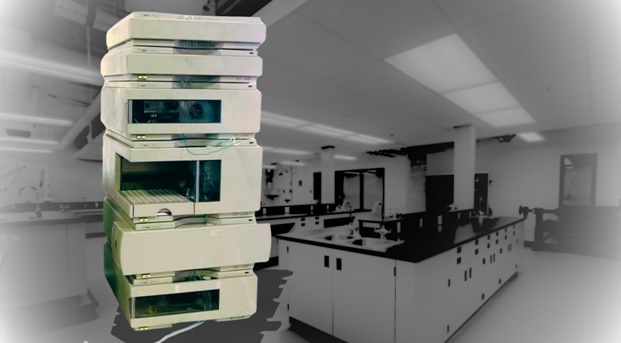Your Quick Guide to Liquid Chromatography for Your Lab
8th Aug 2024

Liquid chromatography has come a long way since its development at the turn of the twentieth century. Defined by the International Union of Pure and Applied Chemistry (IUPAC) as a method for physically separating components in mixtures, LC has become a cornerstone in the realm of analytical chemistry. In LC, the mobile phase is a liquid, and the technique has evolved to include capillary LC, microbore LC, high-performance LC (HPLC), and preparative LC.
One of the major challenges in medicine today is developing new therapies that enhance human health. Addressing these challenges often involves the use of analytical technologies and high-throughput automated platforms, allowing more experiments to be conducted in less time with increased data quality. Liquid chromatography plays a crucial role in monitoring drugs and their metabolites, making it an indispensable tool in pharmaceutical analysis.
Why Liquid Chromatography?
High-performance liquid chromatography (HPLC) has replaced numerous spectroscopic methods and gas chromatography in both qualitative and quantitative analyses of drugs over the past decade. Initially thought to complement gas chromatography, HPLC has nearly completely taken over its role in pharmaceutical analysis.
The use of a liquid mobile phase in HPLC offers the advantage of transforming mobilized polarity during chromatography, depending on the characteristics of the substances being tested. This flexibility makes HPLC a superior method for separation compared to other techniques.
Applications in Food Safety
The importance of liquid chromatography extends beyond pharmaceuticals. Food security, safety, and sustainability have become hot topics, especially during the COVID-19 pandemic.
Improved methods for determining the authenticity, standardization, and efficacy of nutritional properties in natural food products are essential to guarantee quality and support market growth. LC, especially when combined with ultraviolet detection (LC-UV), mass spectrometry (LC-MS), or high-resolution mass spectrometry (LC-HRMS), is among the most powerful techniques to address food safety issues and ensure food authenticity.
How Does an HPLC System with a DAD Detector Work?
HPLC works by passing the sample through a chromatography column, causing individual components within the sample to separate based on their chemical and physical properties. Each component elutes individually from the column, where a detector such as a Diode Array Detector (DAD) analyzes it.
The DAD scans the samples with a light beam across the ultraviolet and visible spectrum, measuring the amount of each wavelength absorbed against the time each chemical species was eluted. This combination of spectral and retention data helps identify different components within the sample and their quantities.
Recommended HPLC System with DAD Detector
We highly recommend the Agilent 1100 HPLC System with DAD Detector and computer for its outstanding performance and reliability. Here are some of its key features:
- Effective blending and smooth solvent delivery guarantee quick and precise outcomes consistently.
- Adjustable stroke volumes maintain steady solvent flow, essential for accurate analytical results.
- An electronically controlled inlet valve, in sync with the pistons, prevents vapor formation.
- Extensive flexibility in solvent selection supports a diverse range of analytical needs.
- The Diode Array Detector provides high-quality separation with thorough spectral analysis.
- Automatic wavelength verification monitors performance to ensure reliable results.
- The combination of deuterium and tungsten lamps offers high intensity and minimal detection limits.
Why Buy Used Analytical Equipment?
Starting a new laboratory can be a daunting task, especially when considering the high costs of new equipment. Buying used analytical equipment, such as HPLC systems, is a smart and cost-effective solution. Here are a few reasons why this decision can be beneficial:
- Cost Savings: Used equipment is significantly cheaper than new, allowing you to allocate funds to other essential areas of your research.
- Proven Performance: Pre-owned systems have a track record of reliability and performance. With proper maintenance, they can provide many years of service.
- Faster Setup: Purchasing used equipment can often mean quicker delivery times compared to waiting for new systems to be manufactured and shipped.
- Sustainability: Reusing equipment contributes to environmental sustainability by reducing the demand for new manufacturing and the associated carbon footprint.
At HiTechTrader, we offer a range of used HPLC systems, including the Agilent 1100, that meet rigorous standards of quality and performance. Our inventory provides cost-effective options that tick all the boxes for your challenging experiments.
Your Go-To Source for Liquid Chromatography Equipment
Whether you're a scientist scrupulously testing pharmaceuticals or a quality control expert safeguarding the food supply, liquid chromatography is an indispensable tool in your analytical arsenal. Having reliable equipment is vital to getting accurate results you can count on - it's the foundation of reproducibility.
HiTechTrader is your trusted partner in providing top-notch used analytical equipment. Need a liquid chromatography system that delivers without breaking the bank? Look no further – our selection, featuring the reliable Agilent 1100 HPLC System with DAD Detector, is your perfect match.
Pair up with a reliable supplier and equip your lab with the right gear, and you'll be tackling scientific breakthroughs in no time. Whatever your lab needs, you'll find it in our inventory - the perfect solution is just a browse away.
